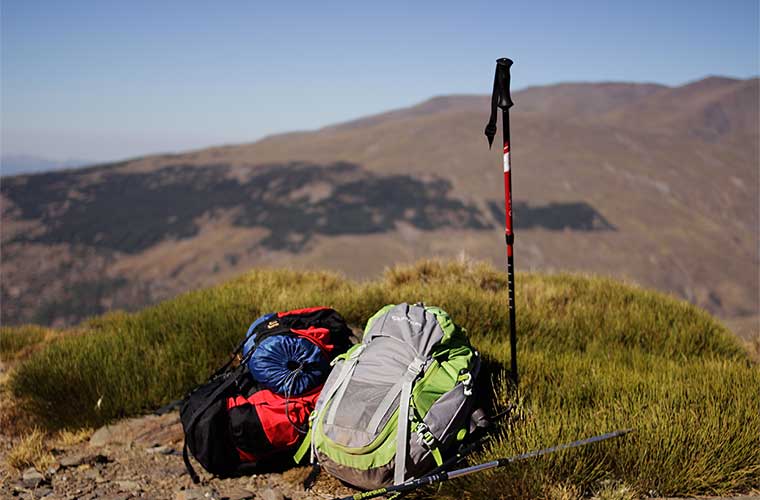How long do trekking poles have to be?

Adjustable poles
For ascents, the poles can be shortened, while for more comfort on descents, they can be lengthened. This manoeuvre will allow the arms are kept at the right angle and the poles will become a great support.
The adjustment mechanism of trekking poles is usually of the screw type: the lower half of the pole is loosened through the screw or twist to fit. Another mechanism is the clampThe cane, usually located in the middle of the cane.
Although the screw adjustment mechanism tends to have a higher risk of failure, in general, if the poles are of good quality, either adjustment mechanism will be good.
A plus point of the adjustable poles is that if you are not using them, they can be folded and stored in the backpackleaving your hands free.
As a general rule, all trekking poles will be adjustable, given the enormous advantages of these poles.
Non-adjustable batons
This type of non-adjustable trekking poles are mainly used in the Nordic walking. They have a fixed length, so to adjust them to different uphill and downhill needs, simply take them lower to shorten them or higher to lengthen them.
Many trekking poles come in designs whose high-tech materials allow for greater grip and ergonomics. However, one trick to improve grip may be to wrap half of the pole with a bit of string to create a better grip space.
There are many mountaineers who are not adept at using walking poles. However, here are some reasons why their use is recommended.
Advantages of using trekking poles
- Reduce stress on joints. The use of trekking poles will help to reduce the impact of steps on joints such as knees and ankles. This will be especially noticeable on descents.
- They help to keeping the balance. The routes where trekking is practised are often on steep and uneven trails. The use of trekking poles will be perfect in this type of terrain.
- They grant security on the move. When crossing rivers or walking on rocky or snowy ground, or in places where visibility is poor, trekking poles can be our best allies.
- Minimise the risk of injury. Good use of trekking poles will help to improve your footing and prevent injuries to meniscus and other vulnerable areas. It will also reduce the load on the back and legs.
- They help to burden sharing on the body. The use of trekking poles will help to ensure that the loads are not only concentrated on the legs, but are spread over the arms, improving performance.
- They contribute to clearing the way. It may happen that the hiking trails have some obstacles. The trekking pole can help to push over some obstacles.
- They increase the walking speed. The steps taken on mountain trails can be made faster with the help of trekking poles.
- They help the survival. Although an animal attack is unlikely, carrying a trekking pole can help you defend yourself.
No products found.
Evolution of trekking poles

It is possible that our ancestors used a simple stick or stick to help them with the obstacles along the way. However, this simple object has evolved to become in many cases a sophisticated piece of impeccable design, such as the trekking poles offered on the market.
The use of materials such as carbon fibre and aluminium have made trekking poles flexible and lightweight.
Elements of trekking poles
- Handle. This is the place where the baton is gripped. It can be made of materials such as plastic, foam or cork. Ideally, the texture of the grip should be somewhat rough, to aid the grip.
- Dragonera. This is the strap that attaches to the hand. The purpose of this element of the trekking pole is to provide a more secure grip, as well as a little extra strength.
- Telescopic sections. These are the parts of the pole that are lengthened or shortened. They are usually made of materials such as aluminium or carbon fibre, in order to achieve the lowest possible weight. Trekking poles may be divided into two or three sections.
- Closures. These are the mechanisms that allow you to adjust the length of the trekking pole. The downside is that it is the first element of the pole that tends to deteriorate, so it is a good idea to check the quality of the system.
- Tips. They usually have a "anti shock"which allows the tip to bend to cushion the blow. They may be made of tungsten.
- Mats. This element is attached to the toe, with the function of protecting it and at the same time softening the tread. They can be made of rubber or rubber.
- Rosettes. These are accessories that are attached to the tip of the pole to prevent the pole from sinking into different surfaces. The smaller diameter rosettes are suitable for summer, while the larger diameter rosettes are recommended for winter because they are more resistant to snow.
READ ALSO:
Don't miss any adventure in the Pyrenees!
